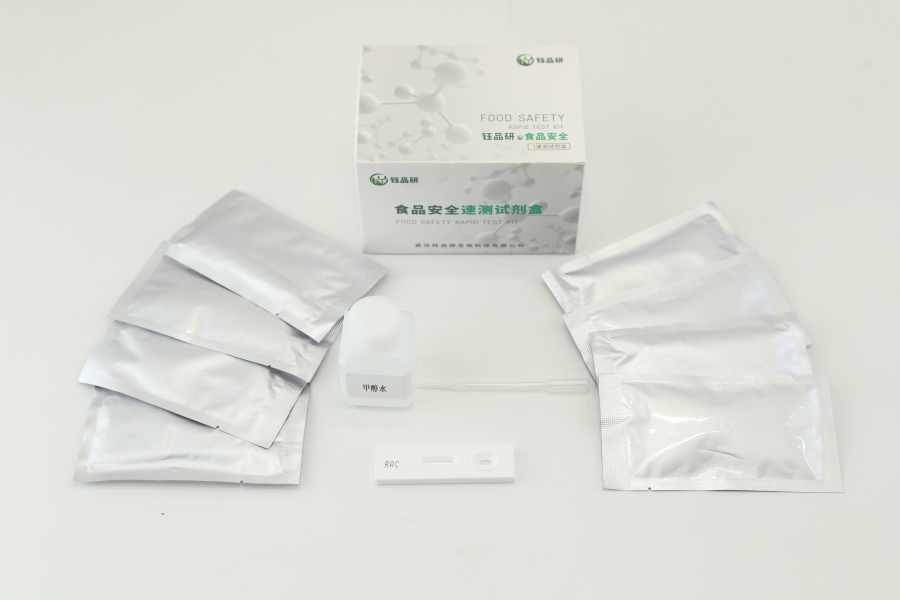Enrofloxacin colloidal gold rapid detection card in poultry eggs is a practical tool for poultry egg products in the field of food safety testing, mainly used for rapid screening of enrofloxacin residues in poultry eggs. As a rapid detection product based on colloidal gold immunochromatography technology, it can make a preliminary judgment on the content of enrofloxacin in poultry egg samples in a short time through the principle of specific binding of antigens and antibodies, which provides convenience for quality and safety supervision in poultry egg production, circulation and other links.
From the technical principle, the detection card uses enrofloxacin antigen and specific antibodies labeled with colloidal gold as the core. When the sample (such as egg homogenate extract) is added dropwise to the sample well of the detection card, the enrofloxacin in the sample will compete with the colloidal gold-labeled antigen to bind antibodies. If enrofloxacin is present in the sample, it will bind to the colloidal gold-labeled antigen to form a complex, and continue to move to the detection line (T-line). If the concentration of enrofloxacin in the sample reaches the detection threshold, the T-line will develop color; otherwise, it will not develop color. At the same time, the quality control line (C-line) always develops color, serving as a valid control for the reaction.
Structurally, the detection card usually consists of a sample pad, a binding pad, an NC membrane, absorbent paper, and a PVC The sample pad is used to adsorb the sample and guide the liquid flow. The binding pad contains colloidal gold-labeled antibodies. A detection line (coated with enrofloxacin conjugate) and a quality control line (coated with antibody) are fixed on the NC membrane. The absorbent paper pulls the liquid through capillary action to complete the reaction.
The actual detection process is simple and fast, generally only 10-15 minutes. The specific steps include: taking an appropriate amount of poultry egg samples (such as 5g egg liquid or egg yolk), adding the extract (such as water or buffer solution) to mix well and centrifuge, and taking the supernatant as a test sample; drop the sample into the sample hole and wait for the liquid to flow to the absorbent paper; observe the color development of C-line and T-line. The color development of C-line is a normal reaction, and the color development of T-line indicates that the residue of enrofloxacin may exceed the standard, which needs to be confirmed by further quantitative detection with instruments.
The detection card has a wide range of application scenarios and is suitable for rapid screening in breeding enterprises, slaughtering and processing plants, farmers' markets, etc. It can also be used as an auxiliary tool for on-site sampling inspection by regulatory authorities. Compared with traditional high performance liquid chromatography and other detection methods, it has the advantages of simple operation, no need for professional equipment, short detection time and low cost, which can effectively help relevant subjects to quickly identify unqualified eggs, reduce safety risks, and ensure consumer dietary safety.


